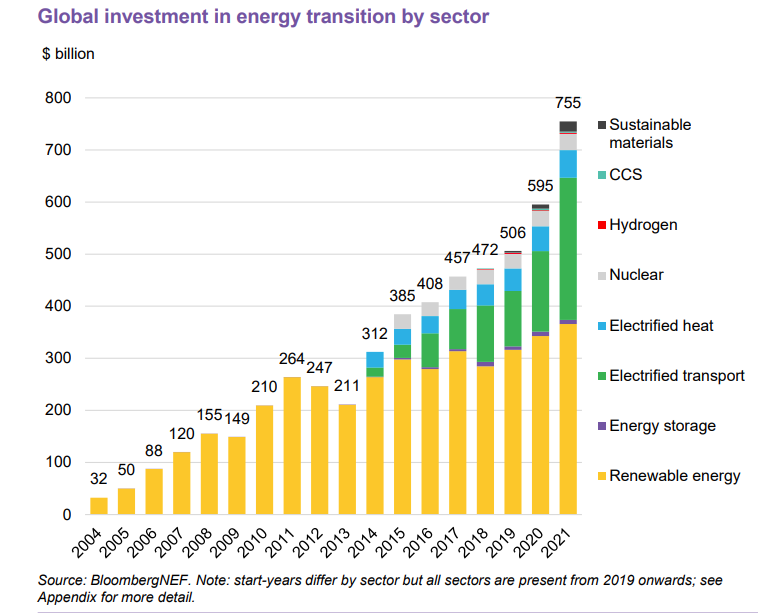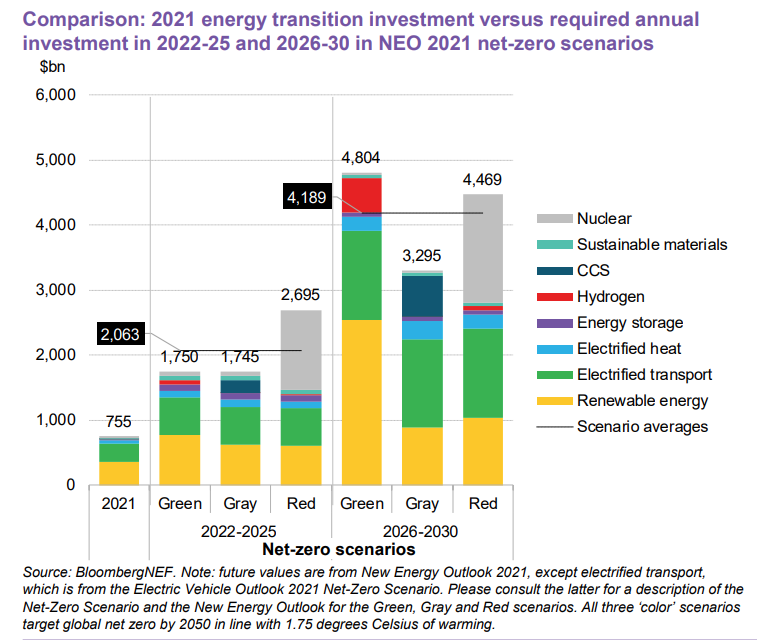|
Bloomberg has broadened its focus beyond investment in renewable energy generation (shown above in yellow) to include investment in other clean energy sectors including electrified transport. As can be seen, electrified transport investment is growing fast and will soon surpass electricity generation investment.
In previous blog posts we have observed that the investment in renewable energy generation has been pretty static at around $300B/year for the last decade. This graph shows a continuation of this trend. There is a slight upward trend but it's at about the underlying rate of inflation so there is no real investment growth in renewable energy generation. As we have previously asserted, this rate of investment in renewables generation is far below what is needed to achieve climate change goals. In the graph below, Bloomberg has quantified the increase in investment out to 2030 that is needed to meet climate change goals by 2050 for three scenarios. The green scenario is a renewable energy only solution. The gray scenario envisages carbon capture and storage (CCS) reducing the need for renewable generation. The red scenario is heavily dependent on nuclear power. The yearly investment in generation as shown has to increase approximately tenfold to decarbonize the energy sector in a timely manner. While renewable energy generation investment has stalled, given the announced plans from almost all major auto manufacturers and the competitive threat from Tesla, the projected increased investment in electrified transport is probably achievable. The most probable scenario is the green scenario, given the negative political sentiment surrounding nuclear and CCS. However a 10X growth in investment for renewables generation is hard to see happening given current circumstances where fossil fuels are resurgent and renewables are stalled. The data clearly shows that renewable energy investment is stalled. There are many technical and political headwinds that explain this stagnation. Stratosolar is a path that can overcome these headwinds and help achieve the green scenario with much lower investment due to its higher capacity factor and lack of a long term intermittency problem. By Edmund Kelly
Comments
|
Archives
December 2023
Categories
All
|
|
© 2024 StratoSolar Inc. All rights reserved.
|
Contact Us
|



 RSS Feed
RSS Feed